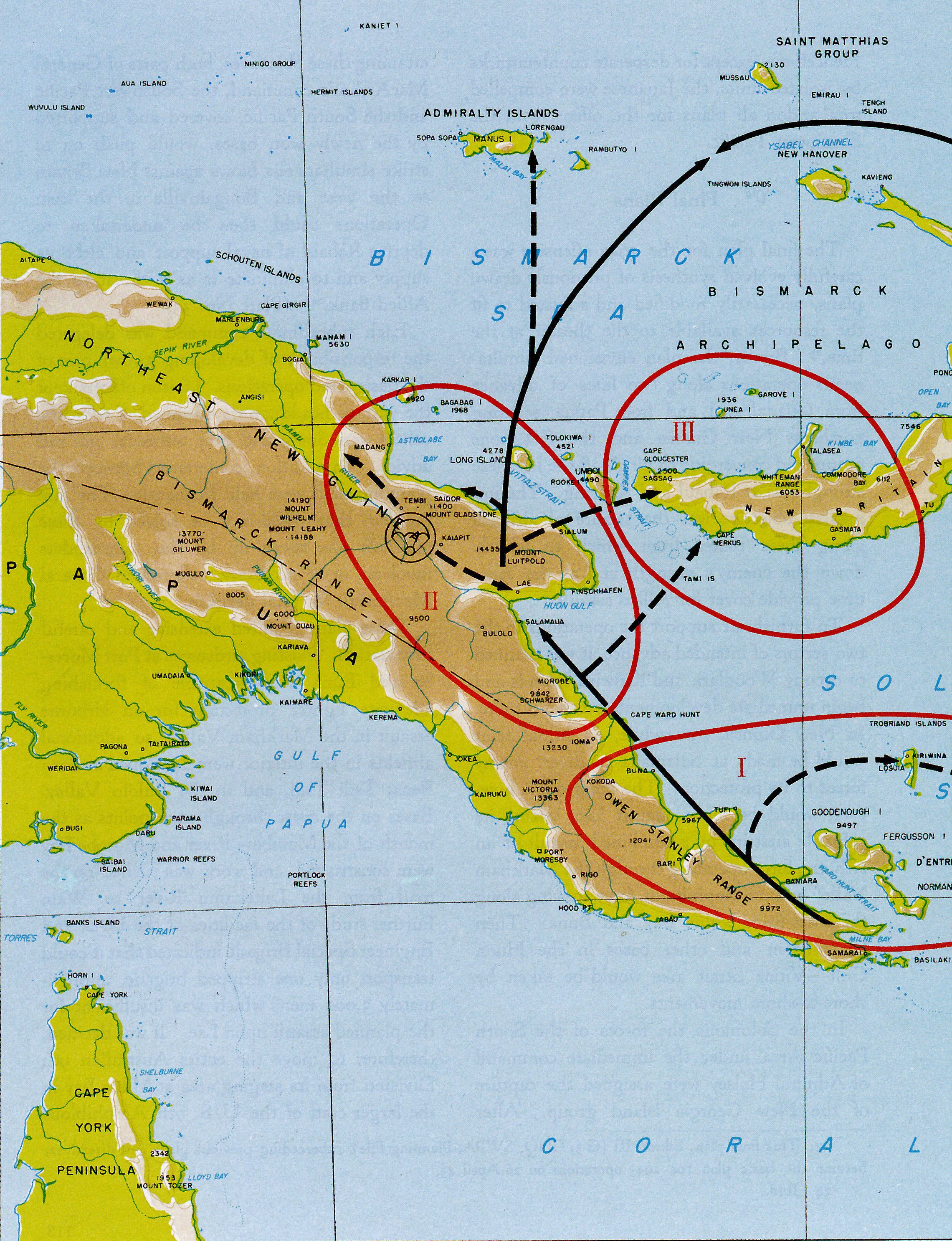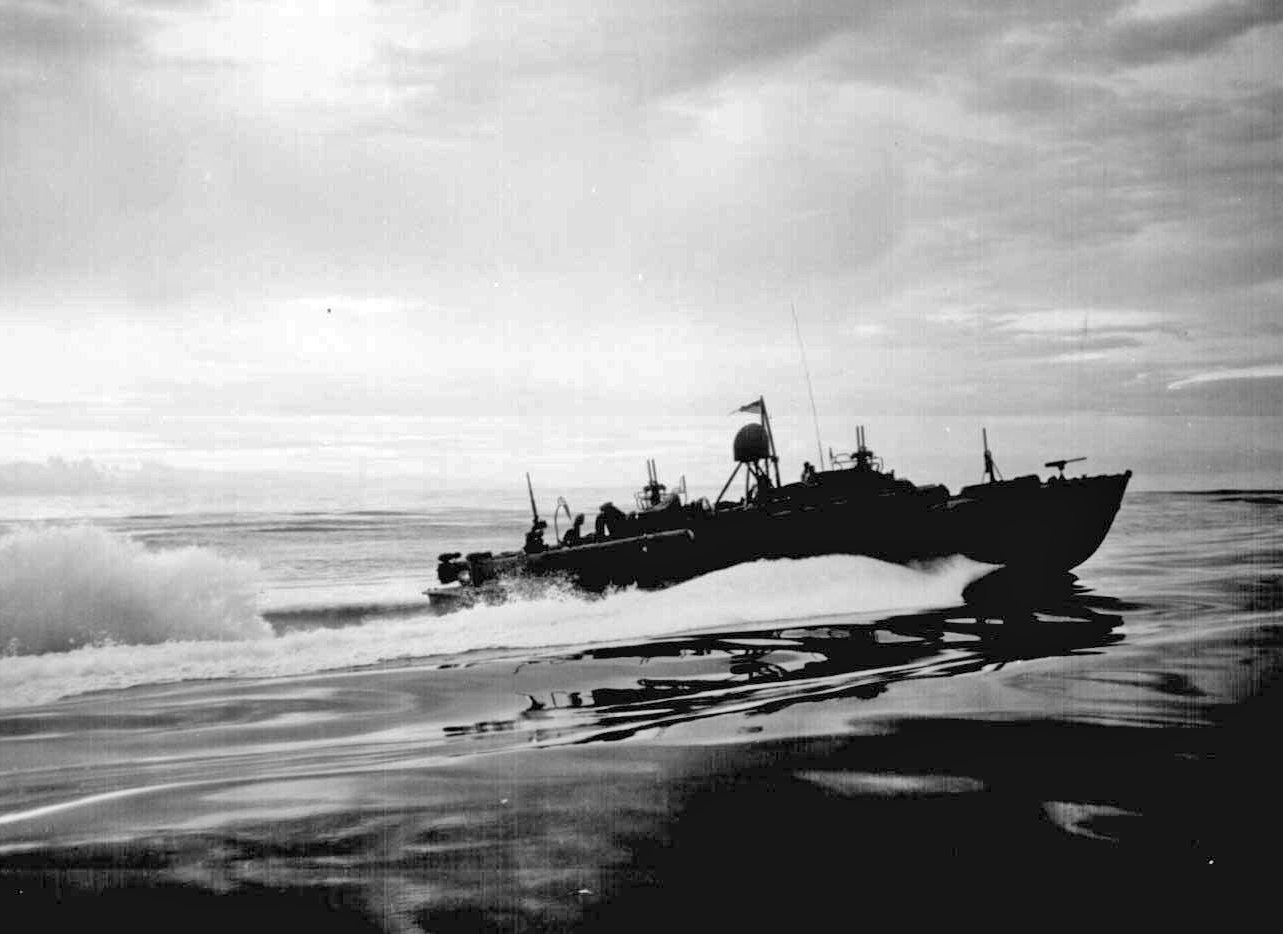|
Battle Of Bobdubi
The Battle of Bobdubi was a series of actions fought in the Salamaua area of the Territory of New Guinea between Australian and Japanese forces which took place from 22 April to 19 August 1943, during World War II. Part of the Allied advance on Salamaua–Lae campaign, Salamaua, the battle was fought in conjunction with several other actions in the region as the Allies attempted to draw Japanese attention away from Lae, where they launched Landing at Lae, seaborne landings in mid-September 1943 in conjunction with Landing at Nadzab, airborne landings around Nadzab. The initial phase of the fighting around Bobdubi was characterised mainly by small unit harassment and reconnaissance operations, while the second phase saw the capture of a number of Japanese defensive positions in locations dubbed "Old Vickers", "Timbered Knoll", and the "Coconuts". Background In late January 1943, during the Battle of Wau a Japanese attempt to capture the vital airfield around Wau had been repelled ... [...More Info...] [...Related Items...] OR: [Wikipedia] [Google] [Baidu] |
World War II
World War II or the Second World War, often abbreviated as WWII or WW2, was a world war that lasted from 1939 to 1945. It involved the vast majority of the world's countries—including all of the great powers—forming two opposing military alliances: the Allies and the Axis powers. World War II was a total war that directly involved more than 100 million personnel from more than 30 countries. The major participants in the war threw their entire economic, industrial, and scientific capabilities behind the war effort, blurring the distinction between civilian and military resources. Aircraft played a major role in the conflict, enabling the strategic bombing of population centres and deploying the only two nuclear weapons ever used in war. World War II was by far the deadliest conflict in human history; it resulted in 70 to 85 million fatalities, mostly among civilians. Tens of millions died due to genocides (including the Holocaust), starvation, ma ... [...More Info...] [...Related Items...] OR: [Wikipedia] [Google] [Baidu] |
Landing At Nadzab
The Landing at Nadzab was an airborne landing on 5 September 1943 during the New Guinea campaign of World War II in conjunction with the landing at Lae. The Nadzab action began with a parachute drop at Lae Nadzab Airport, combined with an overland force. The parachute drop was carried out by the US Army's 503rd Parachute Infantry Regiment and elements of the Australian Army's 2/4th Field Regiment into Nadzab, New Guinea in the Markham Valley, observed by General Douglas MacArthur, circling overhead in a B-17. The Australian 2/2nd Pioneer Battalion, 2/6th Field Company, and B Company, Papuan Infantry Battalion reached Nadzab after an overland and river trek that same day and began preparing the airfield. The first transport aircraft landed the next morning, but bad weather delayed the Allied build up. Over the next days, the 25th Infantry Brigade of the Australian 7th Division gradually arrived. An air crash at Jackson's Field ultimately caused half the Allied casualties ... [...More Info...] [...Related Items...] OR: [Wikipedia] [Google] [Baidu] |
Landing At Nassau Bay
The Landing at Nassau Bay was an amphibious landing by Allied forces at Nassau Bay during the New Guinea campaign of World War II that took place between 30 June and 6 July 1943. The operation was undertaken so that Allies could secure a beachhead to establish a supply point to shorten their supply lines for the proposed attack on Salamaua as part of the Salamaua–Lae campaign and resulted in a battalion-sized force of US infantry and supporting elements being landed largely unopposed on the south-eastern flank of the battle zone. Due to bad weather, the landing force suffered heavy equipment losses with most of the US landing craft being wrecked in heavy seas. Nevertheless, the US troops were able to secure a lodgement from where they subsequently broke out, advancing north as part of a flanking drive on Salamaua, which was launched in conjunction with attacks by Australian forces further west. Australian forces also provided support during the landing, marking the landing b ... [...More Info...] [...Related Items...] OR: [Wikipedia] [Google] [Baidu] |
Battle Of Lababia Ridge
The Battle of Lababia Ridge was fought from 20–23 June 1943 in the Territory of New Guinea during World War II. Part of the Salamaua–Lae campaign, the battle involved Australian and Japanese troops who clashed on the ridge, which was about south of Salamaua, near Mubo, over the course of several days. The battle was fought in conjunction with several other actions in the region as the Allies attempted to draw Japanese attention away from Lae, where they launched seaborne landings in mid-September 1943, in conjunction with airborne landings around Nadzab. The fighting around Lababia Ridge took place at the same time as the Battle of Mubo, after two battalions of Japanese infantry launched a counter-attack on a depleted Australian company. The Australians, supported by Royal Australian Air Force fighter-bombers, managed to hold off the initial Japanese attacks before being reinforced by another depleted company. Fighting continued over the course of three days before the Ja ... [...More Info...] [...Related Items...] OR: [Wikipedia] [Google] [Baidu] |
Markham River
The Markham River is a river in eastern Papua New Guinea. It originates in the Finisterre Range and flows for to empty into the Huon Gulf at Lae. The river was named in 1873 by Captain John Moresby, R.N., in honour of Sir Clements Markham, then Secretary of the Royal Geographical Society The Royal Geographical Society (with the Institute of British Geographers), often shortened to RGS, is a learned society and professional body for geography based in the United Kingdom. Founded in 1830 for the advancement of geographical scien .... A single-lane steel bridge, 1690 feet long – by far the longest bridge built in Papua until that time – was opened in January 1955. References Rivers of Papua New Guinea Morobe Province Lae {{PapuaNewGuinea-river-stub ... [...More Info...] [...Related Items...] OR: [Wikipedia] [Google] [Baidu] |
Bulolo
Bulolo is a town in Wau-Bulolo Urban LLG, Morobe Province, Papua New Guinea. It was once an important gold dredging centre in the former Territory of New Guinea, , MRA situated on the , a tributary of the , about north-west of Wau. The town is served by . Built in June 1930, the Bulolo strip was originall ... [...More Info...] [...Related Items...] OR: [Wikipedia] [Google] [Baidu] |
24th Battalion (Australia)
The 24th Battalion was an infantry battalion of the Australian Army. Originally raised in 1915 for service during World War I as part of the First Australian Imperial Force, 1st Australian Imperial Force, it was attached to the 6th Brigade (Australia), 6th Brigade, 2nd Division (Australia), 2nd Division and served during the Gallipoli campaign and in the trenches of the Western Front (World War I), Western Front in France and Belgium. Following the end of the war the battalion was disbanded in 1919, however, in 1921 it was re-raised as a unit of the part-time Australian Army Reserve, Citizens Forces in Melbourne, Victoria. In 1927, when the part-time forces adopted territorial titles, the battalion adopted the designation of 24th Battalion (Kooyong Regiment). In 1939, the 24th Battalion was merged with the 39th Battalion (Australia), 39th Battalion, however, they were split up in 1941 and in 1943, after being allocated to the 15th Brigade (Australia), 15th Brigade, the 24th Battal ... [...More Info...] [...Related Items...] OR: [Wikipedia] [Google] [Baidu] |
2/7th Battalion (Australia)
The 2/7th Battalion was an infantry battalion of the Australian Army raised for service during World War II. Formed as part of the 6th Division (Australia), 6th Division shortly after the outbreak of the war as part of the all-volunteer Second Australian Imperial Force, the 2/7th Battalion's initial personnel were recruited primarily from the state of Victoria (Australia), Victoria, although later reinforcements were drawn from most other Australian states. Basic training was completed in Australia, after which the battalion embarked for the Middle East as part of the first batch of Australian troops to deploy overseas. Further training was undertaken in Palestine before the battalion went into action against the Italians in January 1941. After participating in the successful capture of Battle of Bardia, Bardia and Battle of Tobruk (1941), Tobruk, it was committed to the disastrous Battle of Greece, Battles of Greece and Battle of Crete, Crete, where the battalion was essentia ... [...More Info...] [...Related Items...] OR: [Wikipedia] [Google] [Baidu] |
2/3rd Commando Squadron (Australia)
The 2/3rd Commando Squadron was one of twelve independent or commando companies and squadrons formed by the Australian Army for service during World War II. Raised in October 1941 as the 2/3rd Independent Company, it served in New Caledonia and New Guinea before being amalgamated into the 2/7th Cavalry Commando Regiment and adopting the name 2/3rd Commando Squadron in 1943. After this, the squadron did not see action again until 1945, when it participated in the Borneo campaign. Throughout the course of the war, the 2/3rd lost 69 members killed in action. No battle honours were awarded to the unit, although it participated in a number of notable engagements in these campaigns and its members received numerous decorations for their service. Following the end of hostilities in the Pacific, the unit was disbanded in early 1946, upon their return to Australia. History Formed in October 1941 as the 2/3rd Independent Company, the unit undertook training at the Guerrilla Warfare Camp a ... [...More Info...] [...Related Items...] OR: [Wikipedia] [Google] [Baidu] |
George Warfe
Colonel George Radford Warfe, (27 July 1912 – 5 November 1975) was an Australian Army officer who commanded several Australian commando and infantry units during the Second World War. He later served in staff and training roles in the post war period, which included service during the Malayan Emergency and then as a civilian advisor during the Vietnam War following his military retirement. He was active in the civil defence organisation in Victoria and in the business community before his death at the age of 63 in November 1975 from cancer. Early life and career George Radford Warfe was born in Leongatha, Victoria, on 27 July 1912. His parents were George Henry Warfe and Ethel Charlotte Warfe (née Armstrong). He was their third child and completed his schooling at the Leongatha High School, and the Working Men's College, in Melbourne. Following graduation, Warfe gained employment in the construction and cabinet-making industries. His military career began as a member of the ... [...More Info...] [...Related Items...] OR: [Wikipedia] [Google] [Baidu] |




.jpg)

